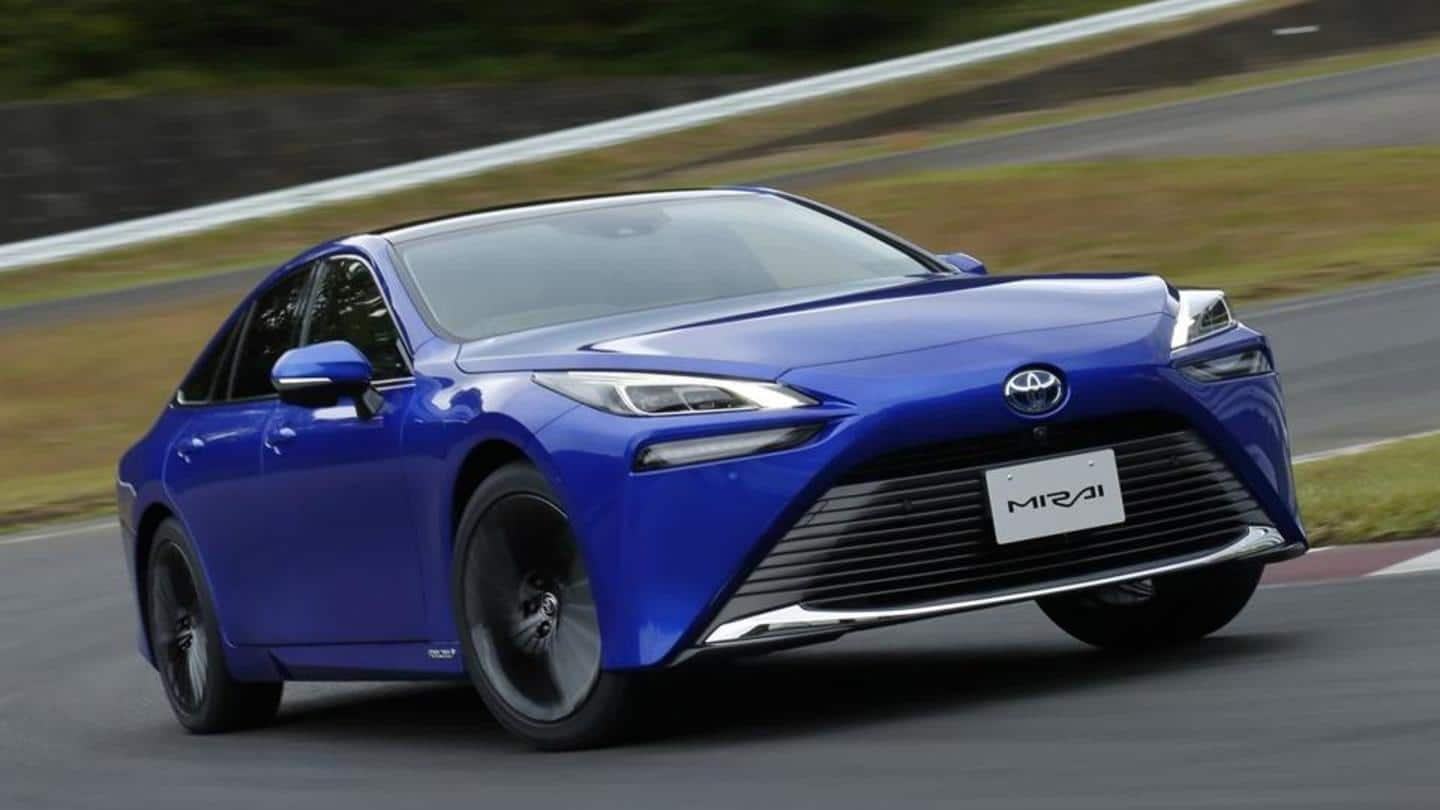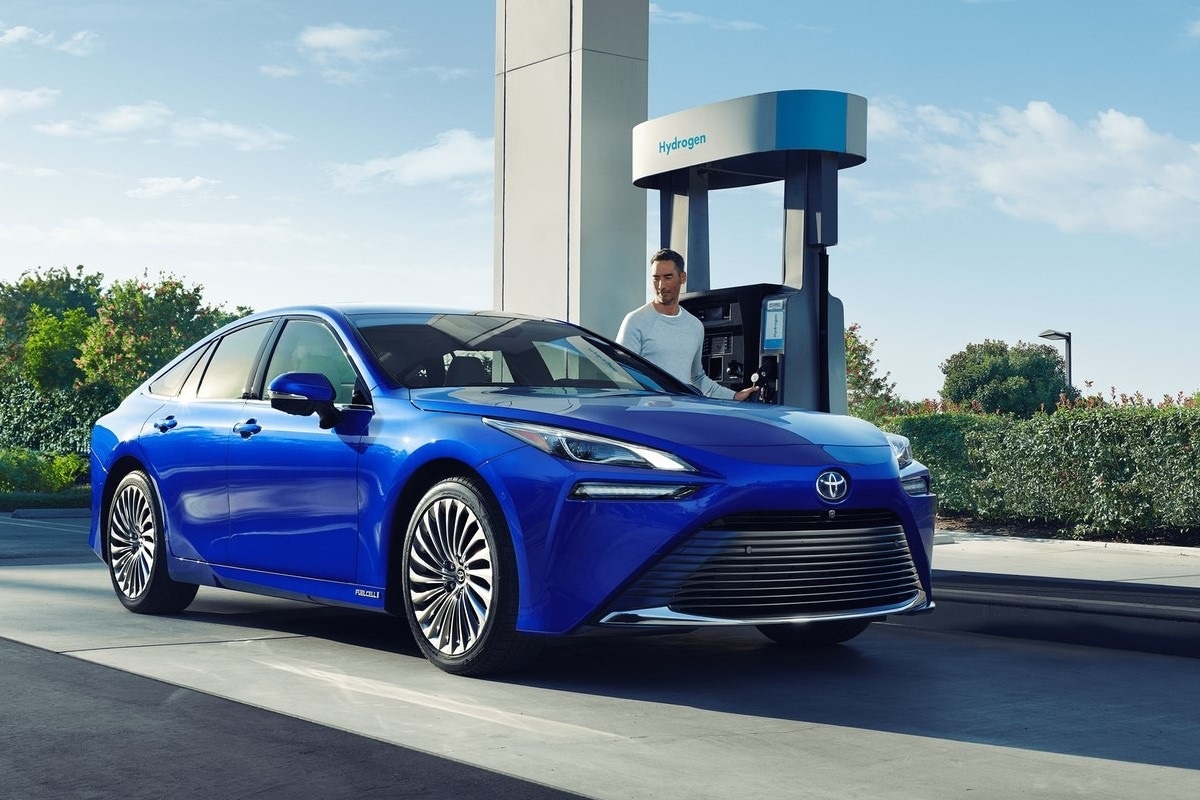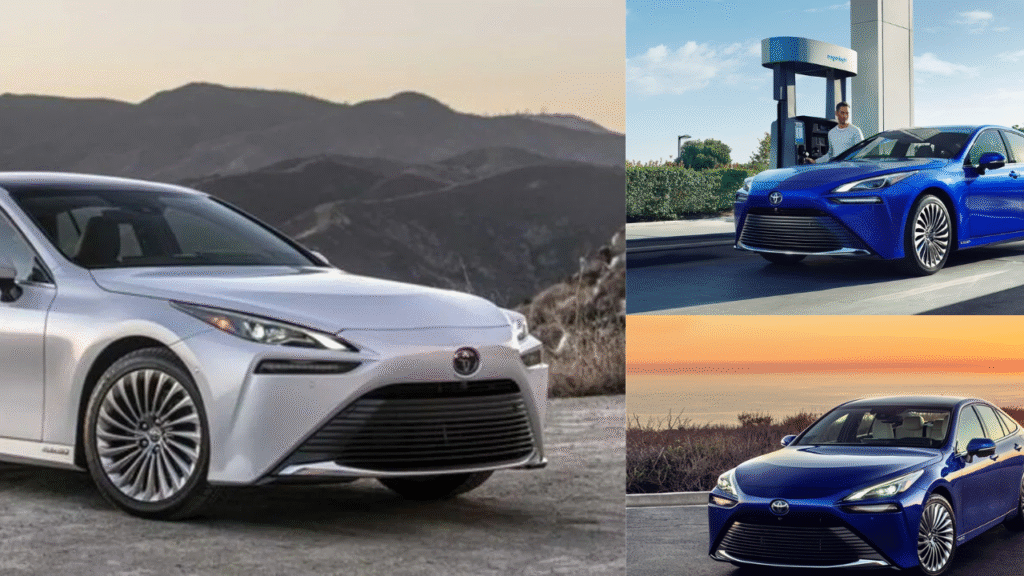Introduction: A Glimpse Into the Mirai
The Toyota Mirai represents a dramatic step in automotive technology. Rather than being a typical petrol or battery-electric vehicle, it uses hydrogen fuel-cell technology to generate electricity on board, producing zero tailpipe emissions. As India looks to transition towards cleaner mobility, a model like the Mirai becomes particularly interesting. But what about its price in India? Is it viable for Indian buyers? This article explores the Mirai’s technology, global story, and what its expected pricing in India might look like—along with all the caveats.
What Is the Toyota Mirai?

The Toyota Mirai is a fuel-cell electric vehicle (FCEV). The basic principle: hydrogen is stored on board (in high-pressure tanks), which reacts with oxygen in a fuel-cell stack, producing electricity to drive an electric motor—only water vapour is emitted.
This differs from battery-electric vehicles (BEVs) which rely on stored electricity in a battery. The Mirai’s appeal lies in quick refuelling (hydrogen refill) and potentially large range—but the catch is infrastructure and cost.
Globally, the Mirai has had limited production, targeted at regions where hydrogen-filling infrastructure exists (e.g., parts of the U.S., Japan, Europe). The name “Mirai” itself is Japanese for “future”.
Global Pricing & Availability
In the U.S., for example, the 2025 Mirai is priced starting around USD $51,795.
In India, there is no official retail launch yet from Toyota (through its Indian arm) for the Mirai; most references mention an expected or estimated price rather than confirmed. For example, one review estimated that if the Mirai were imported into India, with associated costs, “it would cost approximately Rs 1.4 crore-1.6 crore.”
Thus, globally the Mirai is clearly a niche, premium vehicle—its introduction into India (if it happens) is likely to be expensive.
Status of the Mirai in India: Launch, Import, and Feasibility
Several Indian automotive-news portals point out that the Mirai is still not officially launched in India, and that the brand has not set a firm date for its introduction.
For instance, one site notes: “The Toyota Mirai will not launch in India … Toyota haven’t shown any interest in bringing Mirai to Indian market in the foreseeable future.”
Another notes that while an estimated price is around ₹60 lakh, “launch date is not yet announced” and the Mirai is “unlikely to come to India.”
Thus the feasibility is still uncertain: beyond import cost, there are major infrastructure challenges (hydrogen-refilling, service network) and regulatory/tax hurdles. Still, from a buyer’s perspective it’s worth analysing the expected price and making sense of the value proposition.
Expected Price in India & What the Estimates Say
When assessing the expected price of the Mirai in India, the published estimates vary:

- Some portals estimate a starting price around ₹60 lakh (ex-showroom) for India.
- Others suggest much higher once imported—one estimate said ~₹1.4 crore-1.6 crore.
- Another source mentions a tentative starting price of ₹40-45 lakh, though this figure appears to be less reliable.
Given the variation, it appears prudent to treat ~₹60 lakh as a “floor” estimate under favourable conditions (for example, import duties, local incentives, pilot project status) and assume that a “realistic” price might be significantly higher once all costs are included.
Therefore, if you were writing “price in India: expected around ₹60 lakh onwards,” you would be reasonable—but you should also emphasise that this is only indicative, not confirmed, and the actual on-road price may be far higher.
Factors That Influence the Price: Import Duties, Technology, Infrastructure
Why is there such disparity and uncertainty in pricing? Several factors come into play:
- Import / localisation costs: If the Mirai is brought as a fully-built import (CBU), India import duties for such vehicles are high. Without significant local assembly, costs balloon.
- Technology premium: Fuel-cell vehicles are still niche. The cost of the fuel-cell stack, hydrogen storage, specialised components adds up.
- Infrastructure & support: In India the hydrogen-refuelling network is almost non-existent commercially. For the Mirai to function, either Toyota or local government must support hydrogen refuelling infrastructure. That introduces extra fixed cost or service‐network risk which gets priced into the car.
- Regulatory/taxation framework: The GST rate for fuel-cell vehicles, road-tax benefits (if any), and other subsidies will matter. India currently has beautifully low EV GST (5% for battery electric cars) but fuel-cell vehicles may not yet enjoy the same policy support. The higher tax burden will increase price.
- Scale of production / import volume: Low volumes mean higher per-unit cost. If only a handful of units are imported for a pilot project, Toyota will price accordingly.
- Operating cost overhead: The vehicle might require special service centres, special parts, hydrogen refuelling arrangement—all of which increase cost-of-ownership, and the sticker price often reflects this risk.
In short: The quoted price (~₹60 lakh) might assume favourable conditions (pilot project, governmental incentives), whereas a typical retail introduction could command ₹1 crore+.
Why Buy the Mirai? Benefits, Features & What Makes It Unique
What motivates a buyer for the Mirai in India (or globally)? Here are a few selling points:
- Zero tail-pipe emissions: Hydrogen fuel-cell means only water emission; this makes the Mirai an ultra-clean vehicle, aligned with future mobility goals.
- Range & refuelling time: Globally the Mirai offers competitive range (in U.S., up to ~402 miles/~650 km) with a quick hydrogen refill (a few minutes) rather than long battery charge times.
- Toyota brand reliability & proven tech: Toyota has been investing into fuel-cell tech for many years. The Mirai is one of the few commercially available hydrogen cars.
- Prestige / early-adopter appeal: In India, owning a hydrogen FCEV would likely be rare—thus a unique purchase proposition for someone wanting cutting edge tech.
- Future-proofing: If hydrogen infrastructure grows, the Mirai could become one of the cleanest vehicles available without battery degradation concerns.
From a buyer’s perspective, if the price premium is justifiable and refuelling/access is guaranteed, then the Mirai presents a compelling “next-generation” vehicle.
Challenges and Considerations in India
Despite the benefits, several caveats apply — especially in the Indian context:

- Hydrogen-refuelling infrastructure: Currently India has very limited hydrogen stations suited for consumer FCEVs. Without a robust network, Mirai ownership may involve logistical headaches or limited usability.
- Service and parts network: The Mirai’s fuel-cell stack and hydrogen tanks will require specialised service; Toyota may restrict service to select centres, making maintenance costly and inconvenient.
- Resale value risk: With uncertain infrastructure and low volumes, resale could be challenging; buyers must factor in risk of obsolescence or limited support.
- Price premium vs alternatives: At ~₹60-100 lakh+, buyers have many battery-electric, premium ICE, or hybrid options. The Mirai must justify its premium via features and convenience, which may be hard in practice if hydrogen access is limited.
- Policy & incentives uncertainty: If government incentives or low-tax regimes don’t apply to fuel-cell vehicles, ownership cost may significantly exceed expectations. Also, taxes/duties might increase over time.
- Availability and delivery timing: If Mirai is imported in small numbers for pilot projects (as has happened elsewhere), typical buyers may wait long, and servicing might only be in limited cities.
Thus, any prospective Indian buyer should treat the Mirai as a “technology showcase / early-adopter” purchase rather than a mass-market solution—at least for now.
Outlook: What the Future Holds for Fuel-Cell Vehicles in India
While the Mirai itself may be speculative in India today, it represents the broader future of hydrogen mobility. India has ambitious clean energy goals, and hydrogen (green hydrogen) is being discussed as a next-stage solution. For fuel-cell vehicles to succeed in India, these elements must align:
- Growth in hydrogen-refuelling infrastructure (commercial scale)
- Government policy & incentives favouring FCEVs (tax, duties, GST, subsidy)
- Local manufacturing / assembly to reduce cost burden
- Large-scale adoption to bring unit cost down
If that happens, future fuel-cell cars may become viable for more buyers. The Mirai can be seen as one of the earliest such bets. For now, its price in India will remain high — but as infrastructure improves and volumes increase, we may expect more “reasonable” pricing and broader availability.
Conclusion: Is the Mirai a Worthy Bet for India?
In summary: The Toyota Mirai offers exciting, clean-advanced automotive technology—zero emissions, hydrogen fuel-cell innovation, and a unique ownership proposition. For India, recent reports place its expected ex-showroom price at around ₹60 lakh. But realistic cost (import duties, small volumes, lack of infrastructure) could push the effective on-road price much higher (some estimates suggest ₹1 crore+).
If you are an early-adopter with access to hydrogen refuelling, excited by technology, and prepared for some logistical trade-offs, the Mirai might be worth considering. But for traditional buyers looking for daily-use, value-for-money and wide support, waiting for battery-electric or hybrid alternatives (with better infrastructure) may be the more practical route.
For now, the Mirai remains more of a statement car for India—a glimpse at what’s coming next rather than a mainstream offering. If you’re watching the hydrogen mobility future, keep an eye on how Toyota (and other manufacturers) handle volumes, local assembly, and infrastructure growth. The price today may be high—but the lessons it offers could pay off tomorrow.


